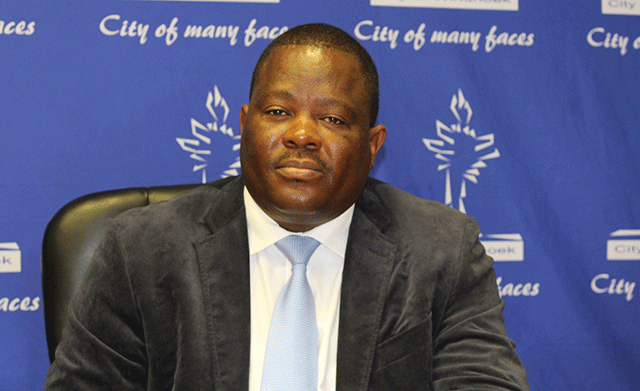The Ministry of Mines and Energy has suspended the issuance of new independent power generation meant for export, in a bid to improve domestic electricity supply.
This was confirmed by Electricity Control Board (ECB) chief executive Robert Kahimise, who said the power regulator had made a recommendation to the minister to impose the moratorium.
“The moratorium pertains to electricity generated by intermittent plants such as solar and wind plants,” says Kahimise.
The reason for the suspension of issuing of new licences is that there is limited capacity on the interconnectors connecting Namibia with Zambia and South Africa for the export of electricity and there is limited transmission capacity in the Northern Cape for the evacuation of power produced in Namibia, he adds.
“These limitations are exacerbated by the intermittent or variable nature of renewable energy generation and its impact on the required reverse levels to ensure a reliable supply of electricity.”
Kahimise says the moratorium came into effect on 5 March and is for a period of 18 months, during which the country’s power utility, NamPower, will conduct studies and also engage other national utilities to address the constraints.
Although Namibia is a net importer of electricity, Kahimise has explained the rationale behind the power export initiative.
He says local demand in Namibia should be met through the implementation of the National Integrated Resource Plan (Nirp), which is a long term plan that matches projected demand growth with supply options.
“If the first Nirp had been implemented as envisaged, it would have resulted in reduced imports in Namibia.
“Namibia also adopted the Modified Single Buyer (MSB) model that allows transmission connected customers in Namibia, such as mines and regional electricity distributors, to obtain up to 30% of their energy requirements from independent power producer (IPPs) licensed in Namibia, thereby reducing the reliance on NamPower and limiting imports accordingly,” he said.
Various MSB plants for local consumption have been licensed, but unfortunately only a few are operational and the electricity supplied by them is very limited, he added.
According to the ECB, under the current MSB model, electricity generators are permitted to construct additional generation capacity in the country for export purposes.
“The IPPs that wish to export power applied for licences to generate and export electricity to the Southern African Power Pool (Sapp), seeing a business opportunity in building larger plants to get the benefits of economies of scale and supplying to off-takers that are not bound by the procurement rules and the Nirp in Namibia, such as NamPower,” Kahimise says, adding that of the 12 IPPs licensed to generate and export power, all but one are renewable plants.
Kahimise says the IPPs are licensed to generate and export 1 262,82 MW, of which 586 MW will be generated by a thermal plant.
“All the IPPs have indicated that they will sell into the Sapp market,” said Kahimise.
* email: matthew@namibian.com.na
Stay informed with The Namibian – your source for credible journalism. Get in-depth reporting and opinions for
only N$85 a month. Invest in journalism, invest in democracy –
Subscribe Now!






